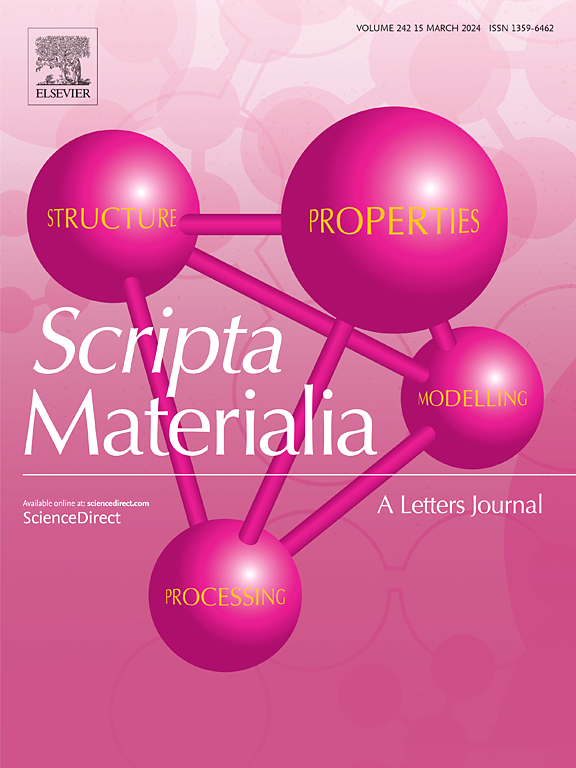PbTiO3/SrTiO3超晶格中极性天子的微观形成过程和应变相关的拓扑相变
IF 5.3
2区 材料科学
Q2 MATERIALS SCIENCE, MULTIDISCIPLINARY
引用次数: 0
摘要
由于其独特的性质超越了传统的极化顺序,因此最近发现的极skyrmions引起了极大的关注,这需要对稳定机制和其他相之间的拓扑转换进行全面的了解。然而,最基本和关键的问题是“极地天空是如何形成的?”仍然难以捉摸。我们首次详细展示了在各种面内应变条件下PbTiO3/SrTiO3超晶格中极性天空和应变依赖的拓扑相变的形成过程。我们的相场模拟表明,面内应变稳定了面外极化,影响了畴生长的速度和所产生的拓扑相。在低面内应变下,大量极化畴迅速生长并相互连接,形成迷宫相。相反,在高面内应变下,畴生长缓慢且单独,形成斯基米子气泡相。我们的研究结果为skyrmions的形成机制和下一代功能器件的设计原则提供了深刻的见解。本文章由计算机程序翻译,如有差异,请以英文原文为准。

Microscopic formation process of polar skyrmions and strain-dependent topological phase transitions in PbTiO3/SrTiO3 superlattices
Recent discoveries of polar skyrmions have garnered significant attention due to their unique properties beyond conventional polarization orders, requiring a comprehensive understanding of the stabilization mechanisms and topological transitions between other phases. However, the fundamental and critical question “How do polar skyrmions form?” still remains elusive. We provide the first detailed demonstration of the formation process of polar skyrmions and strain-dependent topological phase transitions in PbTiO3/SrTiO3 superlattices under various in-plane strain conditions. Our phase-field simulation revealed that in-plane strain stabilizes out-of-plane polarization, influencing the velocity of domain growth and the resulting topological phases. Under low in-plane strain, numerous polarization domains grow rapidly and connect to each other, forming a labyrinth phase. Conversely, under high in-plane strain, domains grow slowly and individually, forming a skyrmion bubble phase. Our results provide profound insights into the formation mechanism of skyrmions and the design principles of next-generation functional devices.
求助全文
通过发布文献求助,成功后即可免费获取论文全文。
去求助
来源期刊

Scripta Materialia
工程技术-材料科学:综合
CiteScore
11.40
自引率
5.00%
发文量
581
审稿时长
34 days
期刊介绍:
Scripta Materialia is a LETTERS journal of Acta Materialia, providing a forum for the rapid publication of short communications on the relationship between the structure and the properties of inorganic materials. The emphasis is on originality rather than incremental research. Short reports on the development of materials with novel or substantially improved properties are also welcomed. Emphasis is on either the functional or mechanical behavior of metals, ceramics and semiconductors at all length scales.
 求助内容:
求助内容: 应助结果提醒方式:
应助结果提醒方式:


